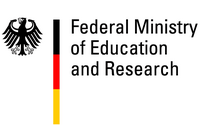Project ProFeLi
ProFeLi – Production engineering of Solid-State batteries with Lithium-Metal-Anode
The safety of lithium-ion cells can potentially be significantly improved by eliminating the combustible electrolyte fluid in solid-state batteries. A dense solid electrolyte layer allows the use of lithium metal as an anode to increase the energy density by up to 70% compared to conventional LIZ. Despite promising results in the area of research and development, the application at the system level with the necessary large-sized single cells is unexplored. In particular, cell, stack and housing design of large-sized solid-state batteries are currently largely unexplored. For production engineering, this results in the processing of new cell materials challenges, such as the achievement of adequate thicknesses to provide energy and power densities in the field of conventional lithium-ion systems with liquid electrolyte, or the processing of pure lithium metal as the anode material, as well as targeted surface modifications to prevent unintentional side reactions.
The aim of the project ProFeLi is a comprehensive production-technical view of the entire value chain for the production of solid-state batteries.
In the subproject of the Technical University Munich, the main focus in research at the Institute for Electrical Energy Storage Technology (EES) is the simulation of the boundary layer between the electrode and the electrolyte as well as the volume expansion of a solid-state battery.
Since the processing of novel materials and cell components as well as an innovative cell design present particularly great challenges in the area of production technology for ASSB, the Institute for Machine Tools and Industrial Management (iwb), as a further research institution of the 'Technical University of Munich, strengthens the project consortium with competences in the field of battery production.

